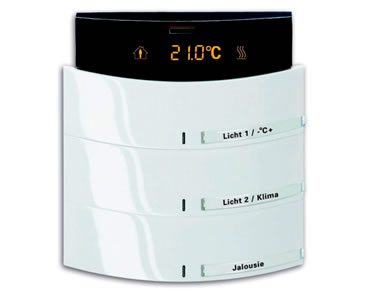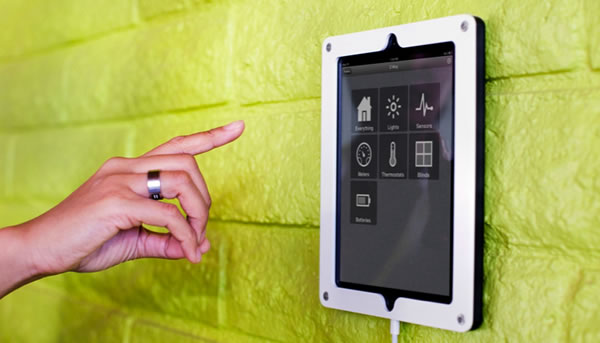 By Simon Buddle, SMC.
By Simon Buddle, SMC.
Some people don’t know how lucky they are. I come from a small market town right in the middle of Nowhere. It has few redeeming features, except perhaps seeing the ‘Welcome to Nowhere’ sign beating a hasty retreat in the car’s rear view mirror. A line from the film ‘Paint Your Wagon’ springs to mind: ‘I’ve never seen a town that didn’t look better looking back’. But it was where I spent a large part of my childhood and, like most of the children of the time, going to bed in the winter involved a stone hot water bottle and a big fight with Jack Frost. During my teenage years, central heating appeared in our house, and Jack was forever banished to the bleak world outside the windows.
It is a strange state of affairs that, while every household in the UK has had a useful and simple thermostatic readout or display for the heating system fitted in the hall, many high-end residences have not. Why not? Well primarily, I suspect it’s down to aesthetics, and of course, the size of the house – it is this fact that I’d like to explore further with you.
We’ve all used the old style circular thermostat with simple temperature marks to control the heating in our home – the whole home, with one thermostat. But we now live and work in a world where our heating and cooling systems must be interlocked. In the UK, due to Part L of Building Regulations, where we are encouraged to split up the house in to multiple heating zones and to provide significantly more control of the systems than was ever previously required. The British Standard BS15232, whilst not currently a statutory requirement in residential, will, I have no doubt, become one in due course with its primary focus on building automation controls, or, in simple terms, exactly what we’re talking about now.

The Case for KNX in HVAC
Many, if not all, of the houses that I work in have some form of lighting control system. This brings about two fundamental requirements: a communication network to all rooms; and an intelligent keypad in the wall in each room. From here on, the case for KNX-based HVAC control seems obvious.
With the addition of two simple elements to the keypad, namely a dynamic display for temperature read out and a thermistor to read the room temperature, we have all we need to provide feedback to and from our heating and cooling systems. ‘Bring it on!’ I hear all of you KNXers cry, and rightly so, for it is one of the few systems/protocols that can offer a truly integrated approach to the on-wall display and the control elements that sit behind it.
When I see an in-wall keypad that cannot operate the lights and heating, I do wonder if the client has gotten the best deal for their money. Coupled with this in-room solution, there are apps and touchscreens that offer global control of all functions within the house. The single-gang heating and lighting keypad is a simple, slick, elegant solution to the wall acne that we’ve historically suffered from. The challenge for all of us is how to spread the word to architects, interior designers and M&E (Mechanical & Electrical) consultants.

There is another great reason for using integrated keypads, and it is simply that the whole system can then be on the KNX platform, thus providing a single communications network and an extremely robust system.
Systems Integrity
‘Systems integrity’ is a phrase that you and my colleagues will hear me utter often – almost daily in fact – as it has become a bit of a mantra. I am very keen on the idea that a system is a complete solution, end to end, not relying on gateways or interfaces or bespoke bits of custom code here there and everywhere. This is not always feasible or practical out in the real world, but I still work hard to ensure that all of the mechanical controls are as one package. Any gateway then is simply passing information regarding the actual temperature, the set point and any other basic control functions. Things can become unnecessarily complicated if, for example, the pumps are on one side of the gateway whilst the manifolds and valves are on the other.

Conclusion
Slowly but surely the world is becoming aware of the need for an integrated solution, and governments around the world are beginning to force the issue. We, as an industry, need to reach out to all of those who specify the on-wall controls and ensure that they are aware of just exactly what we can offer from our world of KNX-enabled products. Providing real-time information for the client will also help to save energy in the long run. In the UK, BS15232 is here and will be enforced soon, so let’s be ready for that!
Simon Buddle is the Technical Director of SMC – systems integration consultants and installers. Simon is also a regular contributor to KNXtoday.













